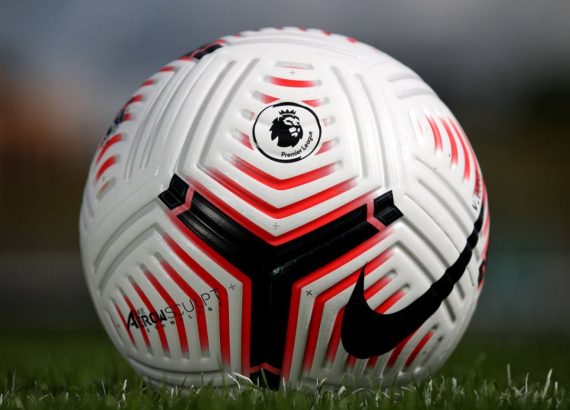Soccer Rules – Rules of Soccer Explained for Everybody

How long does overtime last, what is considered a foul and how can you tell if a player is in an offside position? There are a lot of rules to consider in soccer. Of course, you do not need to know every single soccer rule to enjoy the game as a spectator. A lot of people support their favorite team without even understanding all the subtleties of soccer. But before you watch a soccer game, it would be the ideal opportunity to refresh your soccer knowledge a bit and learn how to play soccer by the rules. Here is soccer for dummies, explained simply and understandably for everyone, especially novices.
-
Number of Players
Both teams consist of a maximum of eleven players, one of whom is the goalkeeper. In each team at least seven players must be on the court, otherwise, the referee may not whistle the game. During the match, each team may exchange three players.
-
Equipment of the Players
For safety reasons, a player may not wear any jewelry or other items that could injure him, or others involved in the soccer field. On the other hand, there is a basic set of equipment for each player, which includes a shirt, shorts, stockings, shin guards – which need not be longer than stockings – and soccer boots. Only the clothing of the goalkeeper differs in colour from that of his teammates. If a player violates any of these rules, the referee will discard him until he has adjusted his equipment in line with the soccer rules and regulations.
-
Duration of the Game
The teams have two 45-minute halves to get the ball into the opponent’s goal. After the first three-quarters of an hour, there is a break that lasts 15 minutes (also called a half times). Then the teams swap ends of the field of play. At the end of the regular playtime, the referee can extend the game by a few minutes, depending on the number and length of interruptions, such as because of injuries, during the match. In tournaments like the World Cup, a winner must be determined at the end of the game. If there is still a draw after the regular time, an extension of two times a quarter of an hour is played. If there is no goal during this time, there will be a penalty shoot-out.
-
Yellow and Red Cards
The referee can call penalties in the case of rule violations. The best known are the yellow and red cards, the yellow is still used as a warning. If a player sees the red card, he is expelled from the court and may not be replaced by a substitution player. There are yellow cards in case of non-observance of instructions of the referee, leaving the field without authorization, cursing or complaining about referee decisions. The referee draws the red card only for serious offenses such as coarse fouls, violent conduct, deliberate hand-play, insulting and spitting at referees or players.
-
Penalty
If a player of the defending team commits one of ten possible offenses within his penalty area, such as kicking, jostling, bumping, hitting, hand playing, holding or kicking an opposing player, he is penalized by a penalty kick awarded to the opposing team.
-
Offside
We’ve all heard it before of the offside rule, right? It is one of the basic soccer rules. An attacking player is offside if he stands behind the last opposing field player the moment the ball is played in his direction. So, the offside rule is quite simple.
-
The Goal
As a rule, the team that scores more goals wins. Nevertheless, a distinction is also made between a direct and an indirect goal. This is especially important for online soccer betting, for example. Free-play goals, kickoffs, kicks, corner kicks, penalties and a direct free-kick are among the direct goals. Indirect goal kicks, however, still require contact with another player before the goal can be scored. This applies, for example, to indirect free kicks and throw-ins. Of course, the ball must come behind the goal line for this to count.
-
Free Kicks
According to the soccer rules, there is a distinction between the direct and indirect free kick. The difference: direct free kicks are kicked without detour towards the goal. Indirect free kicks, however, are previously touched by another player. Several things can trigger a free kick: foul and handling the ball or offside positions can lead to a free kick awarded to the other team.
-
Corner
A corner kick is taken when a defending player has touched the ball before it has rolled over the goal line. The corner kick is taken from the side where the ball has crossed the goal line. The ball is then placed in the corner area next to the corner flagpost. Defending players of the opposing team must at this moment hold at least a distance of 9.15 meters, otherwise, the corner kick may not be executed.
-
Advantage
As soon as a player is fouled, the game is usually interrupted.
The referee may allow the continuation of the game if the team against whom a foul has been committed has an advantage.
However, if the fouled player’s team retains the lead, the game can continue as it may give them a good chance to score. The punishment of the fouling opponent is not canceled but will be postponed until the next game interruption.
-
Kick-off
The kick-off is at the beginning of a soccer game, after a goal, at the beginning of the second half and the beginning of each half in overtime. When kicked off, the ball lies in the middle of the center mark on the soccer field. Only after the referee has blown the whistle, the kick-off, according to the soccer rules, may begin.
At the beginning of the game, a coin is used to decide which of the two teams takes the kick-off.
-
Half Time
The halftime in soccer is the time when the first 45 minutes of the soccer match, ie exactly half, have expired. Colloquially, the break between two halves is referred to as halftime. After 45 minutes of gameplay, there is a 15-minute halftime break in soccer. Afterwards, the teams swap the ends of the field of play.
-
Penalty Shootout
If a winner is needed at certain soccer matches and at the end of the regular time the match ended in a draw, a penalty shootout will determine the winner. This is determined differently depending on the competition in the soccer rules. In most cases, there is an overtime period before a penalty shootout. This is divided into two halves, each lasting 15 minutes. If the score is still tied at the end of the overtime, the game will go into a penalty shootout.
The players of the teams take shots, according to rules, alternately on the same goal. Of course, the goalkeeper changes after each shot. The ball is placed on the penalty mark and as soon as the divisional judge, by a whistle, releases the shot, the current shooter is allowed to shoot at the goal. Both teams are allowed to shoot a penalty five times. The team that scored the most goals from the five shots wins the penalty shootout. The penalty shootout can also be played before the end of the five shots if one of the two teams is already victorious.
-
Throw-ins
A throw-in is when the ball has completely crossed the sideline during the game. The throw-in may be played by the team who has not touched the ball. The throw-in soccer rules state that the ball is thrown in where it went out. The player making the throw-in must touch either the sideline or the ground outside the field with their feet. The ball must be held with both hands and thrown over the head from behind. The other players must be at least two meters away from the spot.
And who creates the rules for soccer anyway?
The origin of soccer rules dates to the 19th century. As early as 1863, the first rules were determined by the Soccer Association. Of course, these were gradually expanded and adapted. The current regulations were then put into effect in 1938 and have since been regularly checked and revised. Responsible are FIFA, the World Soccer Federation, and the international body – International Soccer Association Board.



